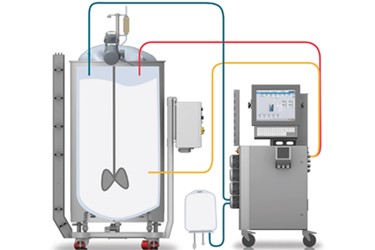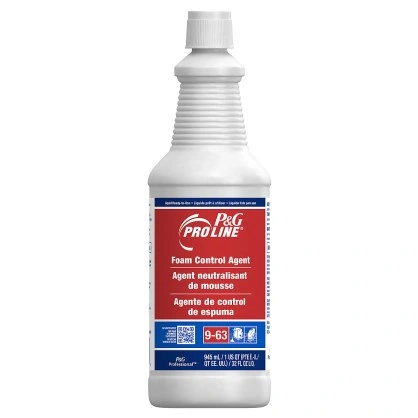Efficient Approaches for Accomplishing Ideal Foam Control in Chemical Production
Efficient foam control is an important aspect of chemical manufacturing that can substantially influence production efficiency and product quality. By comprehending the devices of foam development and selecting suitable anti-foaming agents, makers can take aggressive actions to mitigate extreme foam. Furthermore, the execution of procedure optimization strategies and progressed monitoring systems plays a vital role in preserving ideal operating problems. The subtleties of these strategies can vary extensively throughout various applications, elevating vital inquiries regarding finest methods and real-world implementations that merit further expedition.
Comprehending Foam Formation

Surfactants, or surface-active agents, minimize the surface tension of the liquid, facilitating bubble security and promoting foam generation. In addition, anxiety or mixing procedures can improve bubble formation, frequently exacerbating foam concerns. The qualities of the liquid tool, including thickness and density, further impact foam behavior; for instance, more thick fluids often tend to trap air better, resulting in raised foam stability.
Understanding these essential elements of foam development is important for reliable foam control in chemical manufacturing. By acknowledging the problems that promote foam advancement, producers can implement targeted techniques to minimize its adverse impacts, therefore optimizing production procedures and making certain regular product quality. This foundational expertise is essential before checking out details methods for controlling foam in commercial settings.
Selection of Anti-Foaming Agents
When selecting anti-foaming agents, it is necessary to consider the particular qualities of the chemical procedure and the sort of foam being generated (Foam Control). Various factors influence the efficiency of an anti-foaming agent, including its chemical structure, temperature stability, and compatibility with other procedure products
Silicone-based anti-foams are extensively made use of as a result of their high performance and wide temperature level array. They function by lowering surface tension, allowing the foam bubbles to coalesce and damage even more conveniently. They might not be ideal for all applications, specifically those including sensitive formulas where silicone contamination is a problem.
On the other hand, non-silicone agents, such as mineral oils or natural substances, can be useful in certain circumstances, specifically when silicone deposits are unfavorable. These agents often tend to be much less efficient at higher temperature levels but can give reliable foam control in other conditions.
In addition, comprehending the foam's origin-- whether it emerges from aeration, agitation, or chain reactions-- overviews the selection process. Examining under real operating conditions is critical to make sure that the picked anti-foaming representative meets the one-of-a-kind demands of the chemical manufacturing procedure effectively.
Refine Optimization Techniques
Efficient foam control is a crucial element of maximizing chemical manufacturing processes. By fine-tuning these specifications, drivers can reduce turbulence, consequently minimizing foam formation throughout mixing.
Furthermore, managing temperature level and pressure within the system can considerably affect foam generation. Decreasing the her explanation temperature level may lower the volatility of certain components, resulting in lowered foam. Keeping optimum stress levels assists in minimizing too much gas launch, which adds to foam security.
An additional reliable approach is the strategic addition of anti-foaming agents at critical points of the procedure. Mindful timing and dose can make sure that these representatives successfully reduce foam without interrupting various other process parameters.
Additionally, incorporating a systematic evaluation of resources residential properties can assist determine inherently foaming compounds, enabling for preemptive steps. Performing routine audits and process testimonials can expose ineffectiveness and locations for renovation, allowing continual optimization of foam control strategies.
Monitoring and Control Systems
Tracking and control systems play a crucial duty in preserving optimum foam management throughout the chemical manufacturing procedure. These systems are necessary for real-time observation and modification of foam levels, guaranteeing that manufacturing effectiveness is optimized while decreasing disruptions brought on by extreme foam development.
Advanced sensors and instrumentation are used to discover foam thickness and height, giving vital data that notifies control formulas. This data-driven method permits for the timely application of antifoaming representatives, ensuring that foam levels continue to be within acceptable restrictions. By integrating tracking systems with procedure control software, makers can apply automated actions to foam variations, decreasing the requirement for hand-operated intervention and improving functional uniformity.
Moreover, the combination of maker learning and predictive analytics into keeping an eye on systems can facilitate proactive foam administration. By examining historic foam information and operational parameters, these systems can forecast foam generation patterns and suggest preemptive procedures. Normal calibration and maintenance of monitoring equipment are necessary to make certain precision and integrity in foam discovery.
Ultimately, effective monitoring and control systems are important for enhancing foam control, promoting security, and enhancing general efficiency in chemical manufacturing atmospheres.

Study and Ideal Practices
Real-world applications of surveillance and control systems highlight the value of foam management in chemical production. A notable instance research study entails a large pharmaceutical producer that implemented an automated foam detection system.
An additional excellent situation originates from a petrochemical company that adopted a combination of antifoam agents and procedure optimization strategies. By analyzing foam generation patterns, the company customized its antifoam dose, leading to a 25% decrease in chemical use and significant expense see here financial savings. This targeted strategy not only minimized foam disturbance but also boosted the general security of the manufacturing procedure.

Final Thought
To conclude, achieving ideal foam control in chemical production demands a thorough approach including the choice of suitable anti-foaming agents, execution of process optimization techniques, and the assimilation of sophisticated tracking systems. Routine audits and training additionally improve the effectiveness of click here to read these strategies, promoting a society of continuous enhancement. By addressing foam formation proactively, manufacturers can considerably boost manufacturing performance and item top quality, eventually adding to even more sustainable and economical procedures.
By comprehending the systems of foam formation and choosing appropriate anti-foaming agents, makers can take proactive steps to mitigate too much foam. The attributes of the fluid tool, consisting of thickness and density, more influence foam actions; for example, more viscous liquids often tend to trap air extra effectively, leading to enhanced foam stability.
Recognizing these basic facets of foam development is vital for effective foam control in chemical manufacturing. By evaluating historical foam information and functional parameters, these systems can anticipate foam generation patterns and recommend preemptive measures. Foam Control. Regular audits of foam control gauges make sure that processes remain maximized, while cultivating a culture of proactive foam administration can lead to lasting improvements throughout the production spectrum